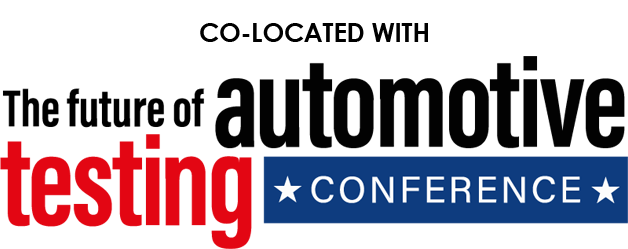Free-to-attend Innovation Showcase - Preliminary Program
Show Floor Tuesday, October 22 - morning session
Moderator
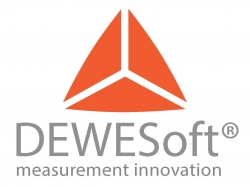 Mike Davis
Mike DavisDirector - Central
DEWESoft LLC
USA
10am
Scenario recreation, variations and simulation for testing ADAS
 Matthew Van Gennip
Matthew Van GennipResearch engineer
Global Center for Automotive Performance Simulation
Canada
The presentation will address scenario recreation, variations and simulation for testing ADAS in the vast range of potential scenarios encountered on the road. Using the Virginia Tech Transportation Institute's extensive naturalistic driving data, GCAPS is able to create realistic scenarios for simulation testing and produce simulation-ready datasets for AADS testing. The variations enable the domain coverage for more robust development and/or validation using HIL, SIL or MIL.
What the audience will learn
- Virtual test case recreation
- Concrete scenario variations (expanding test cases)
- Virginia Tech Transportation Institute's extensive naturalistic driving data
- ADAS testing
- Hardware-in-the-loop testing
10.20am
Analyzing vibration data from electric and hybrid vehicle powertrain components
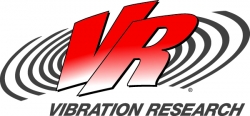 Tom Achatz
Tom AchatzProduct development and validation consultant
Vibration Research
USA
Powertrain systems for electric and hybrid vehicles have different power generation and distribution systems than conventional internal combustion engine (ICE) vehicles. Vibration test engineers must consider these dissimilarities when performing full-scale or component testing, even when working from a test standard. Data from a Cadillac Lyric were measured in the field and analyzed alongside data from an ICE vehicle with comparable weight distribution. In this presentation, we will compare measurements from both vehicle types to build conclusions about EV and hybrid powertrain systems and demonstrate building a vibration test profile with these conclusions in mind.
What the audience will learn
- Electric powertrain systems display unique vibration characteristics in the field
- Test standards recommend building vibration test profiles with measured data
- Software demonstration of accelerated life testing using measured data
10.40am
SDV electrical architecture and challenges to testing and fleet logging
 Colt Correa
Colt CorreaCOO & VP
Intrepid Control Systems
USA
This presentation will provide an overview of changes to electrical architectures in support of Software Defined Vehicles and the new challenges these changes will possess for testing and validation. Details about the reasons why there is a shift towards Automotive Ethernet in Zonal architectures and away from more legacy networks like CAN and FlexRay in Domain architectures will also be explained as well as new testing techniques that will be required to support these industry trends.
What the audience will learn
- Overview of the changes to Electrical Architecture from Domain to Zonal
- Why Zonal architecture is best suited for Software Defined Vehicle (SDV) functionality
- What challenges does the new SDV architecture present for testing and validation compared to legacy Domain
- What are solutions to the above challenges
11am
Measure and map electric powertrains accurately, rapidly and safely
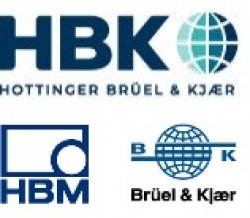 Mike Hoyer
Mike HoyerApplications engineer
HBK Inc.
USA
Learn how to mitigate electromagnetic interference (EMI), map torque ripple (mechanical noise), measure harmonics (electrical noise), improve accuracy, achieve uncompromised safety and rapidly calculate and map measurement uncertainty (MU) for every setpoint in your electric powertrain measurements using a futureproof testing solution.
What the audience will learn
- How to greatly improve accuracy and safety in powertrain measurements
- How to mitigate EMI issues in powertrain measurements
- How to rapidly calculate and map measurement uncertainty for every setup in powertrain measurements
- How to map torque ripple (mechanical noise) in powertrain measurements
- How to measure harmonics (electrical noise) in powertrain measurements
11.20am
Modernizing control software testing of electric powertrain components
 Petar Gartner
Petar GartnerDirector of HIL Solutions
Typhoon HIL
USA
This presentation will talk about the change in testing requirements that transportation electrification brings along with it. The transition from a hardware-defined vehicle to a software-defined one is taking place. Instead of internal combustion engines, which lose performance over time, the modern electric vehicle is based on agile development and continues to improve performance and functionality during operational product maintenance. Increased and improved HIL testing of these components spans beyond the safety criticality standards and offers the opportunity to streamline improvements and enable a safe and ever-improving over-the-air update-based vehicle.
What the audience will learn
- Standardizing the tools for all powertrain component control software
- Improving efficiency of software teams by increasing collaboration
- Ease of use of HIL platform for testing e-drives/e-axles
- Testing onboard chargers, BMS systems, and their integration efficiently
11.40am
Advancing hydrogen safety: Mensor's precision solutions for critical leak testing
 Aaron Rayner
Aaron RaynerDirector of marketing
Mensor
USA
 Derek Zarate
Derek ZarateProduct manager
Mensor
USA
 Paul Giffen
Paul GiffenSales manager
Mensor
USA
Leak testing for hydrogen applications is crucial in the automotive industry as hydrogen fuel cell vehicles gain popularity. The high safety risks associated with hydrogen gas necessitate rigorous leak detection in fuel cell production. The industry faces unique challenges, as different components require specific testing methods, often beyond traditional air-based techniques. As fuel cell stacks grow in size and complexity, more advanced and sensitive leak detection solutions are needed. Mensor's high-accuracy pressure control and calibration products are well suited to meet these demanding requirements. The precision instruments provide the necessary sensitivity for testing.
What the audience will learn
- Importance of leak testing
- Safety concerns in the auto industry
- Component-specific challenges
- Limitations of traditional methods
- Mensor's role and solutions
12pm
Changing the game – how cross-platform synergy reduces costs
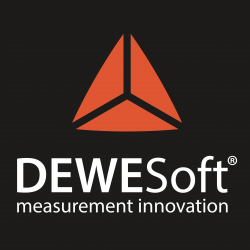 David Gallop
David GallopDirector of Training Services
Dewesoft LLC
USA
Measurement technology has always been driven by specific companies’ visions, primarily driven by their perception of market needs and feedback. The best approach is to offer technological solutions that can cater for a multitude of use cases and ultimately simplify, while expanding usability but without losing sight of the primary objective which, is make it better, faster, more flexible and ultimately something that can reduce costs. A recent innovation you may have heard of is, OpenDAQ. This technology brings an SDK which offers interoperability between a multitude of very different devices and ultimately adds coherence to a seemingly complex environment.
What the audience will learn
- How measurement has been a complex activity in the past.
- Why there is a need for a more integrated approach.
- How this new approach will reduce that complexity.
- How this can reduce costs and streamline processes.
- Why the future should look like this.
12.20pm
Performing TDR with a mixed-signal oscilloscope to troubleshoot automotive
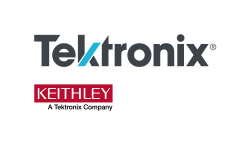 Cameron Lowe
Cameron LoweField applications engineer
Tektronix
USA
Time domain reflectometry (TDR) has been used for decades to find impedance mismatches in cables, connectors and PCB traces. Traditionally, however, TDR has only been performed using sample oscilloscopes or vector network analyzers (VNAs). By using a fast pulse generator and a mixed-signal oscilloscope (MSO), engineers can reduce the amount of test equipment needed to perform the complex task of validating an automotive ethernet link’s stability.
What the audience will learn
- A review of TDR fundamentals
- How Tektronix and Picotest are enabling TDR with MSOs
- How faulty automotive ethernet cables can be analyzed using TDR
- Practical examples will be shared throughout
Show Floor Tuesday, October 22 - afternoon session
Moderator
 Mike Hoyer
Mike HoyerApplications engineer
HBK Inc.
USA
1.10pm
Reduce energy usage by +35% using hybrid HPU technology
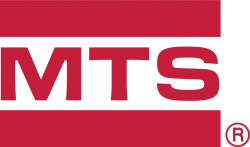 Jim Hennen
Jim HennenMarket and business development manager
MTS Systems
USA
The need to maximize energy efficiency and comply with regional and global decarbonization mandates poses daunting challenges for test laboratory managers. In response, MTS has engineered a new, hybrid approach to hydraulic power generation that employs state-of-the-art digital displacement (radial flow) technology to modulate flow during typical demand, while engaging conventional swash plate (axial flow) technology to achieve maximum efficiency during peak use. This presentation examines the benefits of this new hybrid power generation technology, presents data that demonstrates its effectiveness and explores the numerous ways it will be integrated throughout existing test laboratory infrastructure to dramatically reduce energy usage.
What the audience will learn
- A hybrid approach to hydraulic power generation
- Data supporting hybrid HPU energy efficiency claims
- How hybrid HPU technology can enhance existing infrastructure
1.30pm
The platform for connecting machines to the cloud
 Lance Keen
Lance KeenCEO
Influx Technology
UK
1.50pm
The lifecycle of high-value sensor data
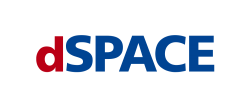 Jacob Perrin
Jacob PerrinSolution specialist
dSPACE
USA
Automated vehicles generate and often store enormous amounts of sensor data. Only some portions of the recorded data are useful for the development and validation of perception or other features. In this talk, we will look at the lifecycle of the highest-value data snippets, from point of origin to end of utility, and some of the hardships endured along the way.
What the audience will learn
- Gain insights into critical stages of the sensor data lifecycle
- Understand the challenges of maintaining a large data lake
- Best practices for optimizing quality, reliability and efficiency of data
- Learn about emerging trends shaping the future of recording management
2.10pm
V2G: how it will revolutionize the way we use EVs
 James Duffy
James DuffyBusiness development manager
Keysight
USA
V2G has the potential to revolutionize the way we use electric vehicles as DERs with our power grid. However, it is still in its early stages. This session will dive deeply into this emerging technology and share the major implications, value and incredible benefits it will provide for the future of EVs with our changing power grid architecture.
What the audience will learn
- Changing grid architecture
- EVs' role as DERs
- Balancing the grid with V2G-enabled EV/EVSE
- V2G compliance standards
- Overcoming test challenges for V2G and DERs
2.30pm
openDAQ – the future of DAQ systems
 Nils Roettger
Nils RoettgerCTO
openDAQ d.o.o.
Slovenia
Over the past two years, the openDAQ Software Development Kit (SDK) has undergone substantial advancement, evolving from concept to actualization. openDAQ release 3.10.0 signifies the culmination of this development effort, with all key features fully developed and refined. This enables seamless integration of test and measurement products into a solution via the unified application programming interface for discovery, streaming and configuration. Notably, openDAQ embraces well-accepted industry standards for achieving this. This advancement is poised to significantly streamline our professional life. How it works, who is already engaged and how you can get engaged are explained in this presentation.
What the audience will learn
- What the openDAQ Software Development Kit is
- Hows the openDAQ SDK enable test and measurement
- The standards which are supported by the openDAQ Software Development Kit
- Which devices talk openDAQ right now
- How you can engange with the openDAQ initiative
2.50pm
Sound quality and fluctuation sound analysis for improving EV comfort
 Masaru Okoshi
Masaru OkoshiOverseas Sales Section Leader
Ono Sokki Co., Ltd.
USA
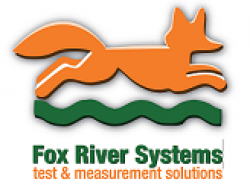 Mike Gilley
Mike GilleyOwner
Fox River Systems
USA
Passenger cabin sounds have been the focus of NVH and BSR analysis in the automotive industry for years, particularly engine, booming, and road noise in internal combustion engine vehicles. However, the shift to electric vehicles (EVs) has changed these targets. Engine and booming noises are now less relevant, while road noise is more prominent in EVs. Additionally, EVs introduce new noise sources, such as inverters and motor electromagnetic noise. Therefore, NVH measurement targets must adapt to these challenges. This presentation will discuss sound quality and fluctuation sound analysis as tools for enhancing ride and sound comfort in modern vehicles.
What the audience will learn
- Evolution of NVH targets in EV vs. ICE vehicles
- Evaluating EV comfort using sound and vibration measurement techniques
- Sound Quality metrics relevant to EV cabin sound field
- Fluctuation sound analysis providing visualization of time-fluctuating sense of sound
- Potential requirements for future EV cabin sound
3.10pm
Introduction to the micromobility device thermoelectric dynamometer
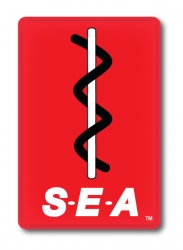 Dr Scott Zagorski
Dr Scott ZagorskiResearch engineer
SEA
USA
SEA's latest product is a micromobility device thermo-electric dynamometer. This machine can evaluate mechanical and electrical properties of micromobility devices such as hoverboards, bikes, scooters, Segways, skateboards, unicycles and ATVs in a laboratory setting. Variable load amounts can be applied to simulate rider presence and road load resistance to represent real-world conditions. The machine also has the ability to measure battery temperatures, voltages and currents. This machine eliminates the need for a test subject or test pad, which allows for controlled, safe and repeatable analysis of micromobility devices under a wide range of testing conditions.
What the audience will learn
- Micromobility Device Thermo-Electric Dynamometer
- Laboratory facility for conducting representative real-world tests for micromobility
- Testing facility for evaluating hoverboard, scooters, bikes, unicycles, ATVs,
- Automated way of applying vertical load and road load
- Test facility for evaluating battery life characteristics under real-world
Show Floor Wednesday, October 23 - morning session
Moderator
 Barry Bolling
Barry BollingSenior Application Engineer
HIOKI USA Corp
USA
10am
Replica - RDMA-based reflective memory low-latency real-time network
 Todd VanGilder
Todd VanGilderCRO/CTO
Genuen
USA
 Ryan Smith
Ryan SmithTech fellow
Genuen
USA
Replica, developed by Genuen, revolutionizes real-time network traffic over standard infrastructure, surpassing current industry rates. Leveraging remote direct memory access (RDMA) over converged ethernet (RoCE), Replica ensures ultra-low latency, enabling complex distributed systems to achieve loop rates above 50kHz. By applying reflective memory concepts, it maps the CPU's memory space to maintain synchronized local copies of distributed variables. This cutting-edge technology supports various versions of Linux OS through shared libraries, ensuring seamless real-time data sharing across nodes. Replica’s vendor-independent approach facilitates integration in multivendor simulation and hardware-in-the-loop systems, significantly advancing real-time XIL capabilities across the automotive industry.
What the audience will learn
- Revolutionize real-time network performance with ultra-low latency
- Achieve synchronization of data across distributed real-time systems
- Enable loop rates above 50kHz with standard infrastructure
- Leverage cutting-edge RDMA over converged ethernet (RoCE)
- Facilitate seamless integration in multivendor HIL systems
10.20am
Why wheel force transducers and steering effort sensors are very important for automotive development. What are the challenges?
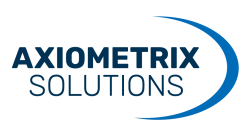 Andreas Mathes
Andreas MathesAutomotive sensors and telemetry specialist
Axiometrix Solutions
USA
Modern vehicles, both combustion engines and EVs, are equipped with state-of-the-art driver assistance systems. Driving dynamics tests and in-depth simulations are just as necessary for the development and further development of these systems. This poses different challenges for EVs than for combustion vehicles. Axiometrix Solutions offers the sensor technology and data acquisition for these applications.
10.40am
Revolutionizing driving simulation: introducing the Driver-in-Motion Full Spectrum Simulator
 David Bogema
David BogemaSenior director, product management
VI-grade
USA
This paper presents the Driver-in-Motion Full Spectrum Dynamic Simulator (DiM FSS) by VI-grade, a pioneering advancement in driving simulation. Building on previous models, the DiM FSS is a full-motion multistage simulator providing full 6-DOF large-scale motion, combined with high-frequency NVH transducers at driver touchpoints delivering vibration, along with highly accurate vehicle sound. Unlike conventional simulators, the DiM FSS integrates primary ride motion, secondary ride motion, vibration and sound simulation simultaneously, powered by VI-grade AutoHawk technology. This allows for comprehensive evaluation of handling, ride comfort and NVH in one simulator.
What the audience will learn
- Multi-attribute simulation
- Driving simulator
- Vehicle dynamics
- NVH
- Vibration simulation
11am
Advance controller development with a pragmatic digital approach
 Patric Schenk
Patric SchenkManaging Director AMER
Speedgoat Inc.
USA
Engineering firms are challenged to rapidly and continuously innovate and test novel control designs and embedded controllers. Achieving a seamless transition from early requirements to design and validation remains challenging, with workflow gaps hindering complete artifact reuse and end-to-end automation.
Our presentation introduces a fully connected model-based engineering workflow that integrates requirements, tests, controller, and digital twin models, in a single digital thread, that is reused across all development stages.
This enables a seamless transition from system architecture to desktop and real-time design exploration and verification, rapid control prototyping, embedded code deployment, and automated testing with hardware-in-the-loop testing.
What the audience will learn
- Innovation in Automotive Testing with Model-Based Design
- Reuse artifacts and benefit from end-to-end automation
- Rely and performant acquisition, prototyping and testing hardware.
11.20am
Rethinking testing: the evolution from lab management to comprehensive test lifecycle solutions
 Ajay Krishnamurthy
Ajay KrishnamurthyCEO
12th Wonder
USA
In today’s automotive industry, traditional lab management systems fall short when addressing the complexity of modern testing programs. As testing requirements grow, the need for an integrated solution becomes paramount. This presentation explores the evolution from basic lab management to comprehensive test lifecycle management, highlighting how an end-to-end solution seamlessly integrates test planning (including DVP&R management) with lab operations. By unifying lab processes and offering centralized test data management, a modern test lifecycle system ensures efficiency, traceability, and enhanced collaboration, making it the ideal choice for tackling the intricate demands of automotive testing programs.
11.40am
Industrial cybersecurity threats pose safety risks in manufacturing
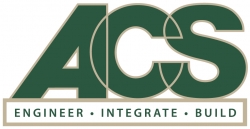 Andrew Harris
Andrew HarrisControls engineering team lead, Michigan / director of business development – controls
ACS
USA
The presentation emphasizes the critical importance of industrial cybersecurity, highlighting the rising cyber threats to industrial control system computers in manufacturing facilities. It advocates for documented cybersecurity plans and expert-led risk assessments to fortify operations against potential attacks. Many companies mistakenly believe they are not targets, but all organizations with valuable assets are at risk. The presentation will enforce the need for technological advancements, robust defense strategies and a cybersecurity-focused culture. Regular safety assessments are vital to secure interconnected systems, protect sensitive information and ensure safe, continuous operations in the increasingly software-reliant manufacturing sector.
What the audience will learn
- IoT and ethernet advances outpace cybersecurity focus in manufacturing
- Lack of IT integration increases cybersecurity vulnerabilities
- Cybersecurity assessments start with documenting all access points
- Cybersecurity culture requires collaboration and senior management support
- Experienced integrators boost cybersecurity in manufacturing systems
12pm
Electrifying test stands to improve energy efficiency
 Kaitlin Scott
Kaitlin ScottTest stands industry professional
Siemens
USA
In today’s rapidly evolving industrial landscape, energy efficiency and sustainability are paramount. The presentation delves further into the world of electrifying test stands – a game-changing approach that promises substantial benefits. It will explore the shift to electrification, including examples such as the transition from pneumatic to fully electrified test stands, explaining how electrification can yield impressive energy efficiency gains. Whether you’re a seasoned engineer or a curious observer, this presentation promises insights that will spark discussions and drive innovation. Let’s power up for a greener, more efficient future!
What the audience will learn
- Introduction to electrifying test stands
- The transition from pneumatic to fully electrified test stands
- Electrification can yield impressive energy efficiency gains – up to 60-80%
- Other energy efficiency points
- Conclusion
12.20pm
Introducing new time series data analytics software for engineers
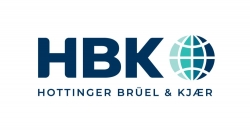 Jon Aldred
Jon AldredDirector, product management
HBK
USA
With the increasing availability of time series data from many sources, engineers need high performance software that can quickly enable decision making. Building upon the streamed data analytics capabilities of nCodeDS, new software from HBK helps engineers bring together various sources of sensor data e.g. MDF4 files containing CAN bus data, connected vehicle Parquet files in data lakes, etc. A wide range of engineering analysis functions are provided that can be used in a graphical, drag-and-drop interface for immediate productivity. Customer proprietary methods and machine learning can be added using Python scripting to gain even greater insights from vehicle data.
What the audience will learn
- Unique capabilities to gain insights from time series data
- Productivity gains from high performance analytics
- Capabilities to go straight from sensor data to dashboard report
- How to enable data science for engineers
Show Floor Wednesday, October 23 - afternoon session
1.10pm
Fluid spray system integrated into vehicle chassis dyno for testing vehicles
 Ashish Gandhi
Ashish GandhiDeputy general manager
Maruti Suzuki India
India
The fluid spray system allows durability and thermal shock testing of the muffler components of an exhaust system of a vehicle inside a chassis dyno lab. It comprises a fluid spray mechanism, including a main fluid collection tray equipped with a plurality of fluid spray nozzles fluidly connected to a fluid reservoir. The mechanism also includes one or more movable side cover trays that can move in lateral and axial directions of the main fluid collection tray and is adapted to collect fluid drip from the underbody of the test vehicle. The plurality of fluid spray nozzles is configured to the underbody of the test vehicle.
What the audience will learn
- Efficiency improvement in terms of vehicle testing on chassis dyno
- Overall safety enhancement in new model testing
- Innovative method for conducting durability testing of vehicle exhaust system
- Accuracy enhancement in terms of test execution and control
- Achieving reliability and repeatability of test results for test engineers and designers
1.30pm
Improving engine testing efficiency using high-quality sensors
 Kevin Walsh
Kevin WalshApplication sales engineer
Vaisala, Inc.
USA
High-quality sensors for relative humidity, temperature and barometric pressure are essential in engine test cells and dynamometer rooms as they ensure precise monitoring and control, which is critical for accurate testing and validation of automotive systems. These sensors provide reliable data for assessing performance, durability and compliance with environmental standards. Their robust design allows for operation in extreme conditions, while advanced technology ensures fast response times and minimal maintenance. Utilizing such sensors leads to improved testing efficiency, enhanced product quality and a deeper understanding of engine behavior under various conditions.
What the audience will learn
- The benefits of using high-quality measurement sensors to improve testing efficiency in dynamometer rooms and test engine cells
- How stable measurement sensors lead to lower total cost of ownership through lower maintenance costs
- How using robust sensors can help withstand even the harshest test conditions
1.50pm
Early-stage vehicle system development with tire models
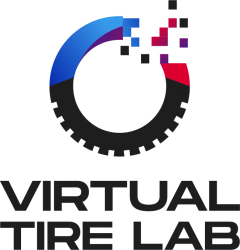 Adam Stackpole
Adam StackpoleProject Manager / Mechanical Engineer
Stackpole Engineering Services
USA
Automotive Original Equipment Manufacturers (OEMs), tier suppliers, and tire manufacturers are continuously striving to expedite the development of new platforms and components. This entails early integration of virtual simulations, particularly in scenarios where physical prototypes are unavailable. In this presentation, we explore the collaborative efforts between Stackpole Engineering Services and Smithers, focusing on how the strategic selection of tire testing data and model fitting methodologies empowers engineers through sophisticated tools catered to development support. We illustrate how these tools facilitate smoother early design cycle initiatives, ultimately enhancing the efficiency and effectiveness of automotive and tire development processes.
What the audience will learn
- How tire models can support early platform development
- Tire testing techniquest that support modeling
- Overview of Virtual Tire Lab service offering
- How tire models can be used in Agile Tire software
- Using Virtual Tire Lab tire models in vehicle simulations
2.10pm
Millivolt to microvolt: how your BMS can enable more miles
 Mitchell Kelley
Mitchell KelleyField Sales Engineer
Pickering Interfaces
USA
This session will focus on BMS accuracy improvements that will extend the range of your battery packs. Specifically, we will discuss the changes and upgrades your hardware-in-the-loop (HIL) system will need to match future BMS Performance. You will also learn about the challenges posed by voltage drop, thermal offset, and the quality of wiring, as well as how to address these issues.
What the audience will learn
- Range Challenges in BMS: Understand the impact of the
- Wiring Solutions: Discover the importance of HIL wiring for measurements
- Switching Solutions: Explore the types of relays needed to manage
- Collaborative Approaches: See how collaboration between various tools and methodologies
- The Future of BMS: How impedance measurement and technology
2.30pm
Innovations in automotive testing: the drive toward safety and compliance
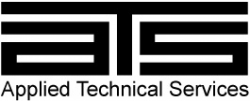 Justin Burmeister
Justin BurmeisterDirector, analytical services and business innovation
Applied Technical Services, LLC
USA
A high-level overview of the current testing landscape, testing trends, emerging techologies and what the future of automotive testing may hold.
What the audience will learn
- Current testing requirements
- Trends and emerging technologies
- Changes to the automotive testing landscape.
2.50pm
Introduction of mechanical stress measurement technology in the hydrogen gas environment
 Takahiro Hara
Takahiro HaraBusiness development
Kyowa Americas Inc.
USA
There is growing development of fuel-cell vehicles and hydrogen stations to achieve low carbon emissions. It has led to more requirements for durability evaluation of components in a hydrogen gas environment. Some past research revealed the strength of certain materials could be degraded by the hydrogen embrittlement phenomenon. Therefore, it is critical to perform mechanical fatigue analysis to develop advanced materials that can withstand a hydrogen environment. This presentation will review Kyowa's special strain gage and force transducers, made with Fe-Cr alloy foil in sensing elements, which are less susceptible to hydrogen embrittlement and offer a reliable mechanical testing solution based on background data.
What the audience will learn
- Why material durability assessment is critical in hydrogen
- The difficulty with conducting strain measurements in hydrogen
- The superior performance of strain gages made with Fe-Cr alloy material
3.10pm
High-speed acoustic imaging for the localization of impulse-like sound emissions
 Dr Thomas Rittenschober
Dr Thomas RittenschoberCEO|CTO
Seven Bel GmbH
Austria
Introducing a novel method for visualizing ultra-short sound events in automotive components, such as the engaging of an electromechanical clutch or the clicking of a car seat frame. Traditional acoustic cameras capture around 100 images per second, but this is insufficient for events lasting less than 10ms, leading to ambiguous results. Our method increases frame rate tenfold, achieving accurate localization and separation of direct and reflected sound. Using a rotating linear array of 5 digital microphones, the system compensates for Doppler distortions and evaluates signal coherence with a non-moving reference microphone for each point in the acoustic image.
What the audience will learn
- The Coherence Scanning Holography method (as opposed to traditional beamforming)
- It's implementation advantages and adaptation for High Speed Imaging
- It's real world applications in automotive NVH Engineering
Show Floor Thursday, October 24 - morning session
10am
MCU/TCU integration bench test for electrified Class-8 heavy-duty truck
 Dr Yongpeng Zhang
Dr Yongpeng ZhangManager of e-drive system engineering
Hyzon Motors
USA
Hyzon Motors is a Nasdaq-listed startup company focusing on hydrogen fuel cell development and related electrified powertrain engineering. In its second-generation 200kw fuel cell-based powertrain, the traction motor and gearbox assembly are provided by one supplier, and the motor controller unit is integrated into a 5-in-1 power distribution unit provided by another supplier. Hyzon will share with the audience how to organize and manage the bench test involving two individual suppliers and wrap up all the testing within a month.
What the audience will learn
- Electrified vehicles
- Class-8 heavy-duty trucks
- Hydrogen fuel cells
- MCU/TCU integration
- Bench tests
10.20am
Boundary testing electric vehicle supply equipment (EVSE)
 Jonathan McCallie
Jonathan McCallieATE sales director
Chroma
USA
Electric vehicle charging station manufacturers face a number of challenges, including connectivity issues, component problems and incompatibility. In this presentation, you will learn how to ensure EVSE product reliability and operability is at its optimum before field issues arise. For example, how to control the EVSE to output multiple connectors at the same time based on specified test conditions, and simulate plugging in at different times to test the equipment’s power-sharing capabilities. This test scenario provides realism and, compared with conventional single-coupler testing, reduces the overall testing time by up to 40%, significantly expanding test capacity.
What the audience will learn
- Testing EV charging processes and safety mechanisms
- EVSE product reliability and operability
- Power sharing or load management testing
10.40am
Vehicle cybersecurity: shifting left with HIL- and SIL-based cybersecurity testing
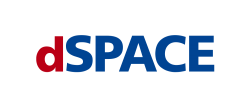 Dr Matthias Pukrop
Dr Matthias PukropProduct engineer
dSPACE GmbH
Germany
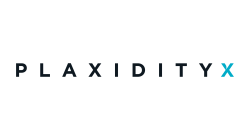 Jason Cole
Jason ColeSales director
PlaxidityX (formerly Argus Cyber Security)
USA
Vehicle penetration testing is essential to the type approval regulatory requirement and is crucial in uncovering security vulnerabilities in vehicles. However, navigating the resolution process can be time-consuming, with potential business impacts such as a delay in the start of production date. This presentation will explore a strategic approach to managing this process and mitigating risks by shifting left, harnessing hardware-in-the-loop and software-in-the-loop test platforms for automated cybersecurity testing in the development stages. It will also discuss how this proactive methodology identifies issues early and streamlines the finalization stages, ensuring your product’s security is comprehensively validated.
What the audience will learn
- How HIL and SIL test systems allow automated cybersecurity testing
- The pivotal role of penetration testing in meeting automotive cybersecurity regulations
- Frontloading V&V activities by conducting SIL- and HIL-based cybersecurity tests
11am
Revolutionizing automotive testing with QTec technology
 Osama Jameel
Osama JameelTeam lead - central region
Polytec
USA
In the ever-evolving automotive industry, innovation is key to staying competitive. The highly innovative, patented QTec technology stands at the forefront of this revolution, offering groundbreaking advances in vibrometry. This presentation delves into the transformative impact of QTec technology on automotive manufacturing and testing processes. By leveraging QTec's superior measurement accuracy and non-contact capabilities, automotive engineers can achieve unparalleled insights into vehicle dynamics, structural integrity and component performance. This leads to enhanced product quality, reduced development cycles and significant cost savings.
Attendees will explore the core principles of QTec technology, its applications in various automotive scenarios and real-world case studies.
What the audience will learn
- Explore core principles of QTec technology
- How QTec is driving the future of automotive innovation
- Ensuring vehicles are not only high-performing, but also safe and reliable
- Real-world case studies demonstrating QTec's efficacy
- Various applications in the automotive industry
11.20am
Pressure sensors for testing in hydrogen environments
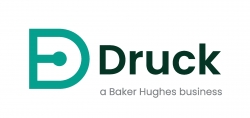 Stephen Sajben
Stephen SajbenSenior product specialist
Druck, a Baker Hughes company
USA
In the continuing efforts to improve fuel cell technology for use in fuel cell electric vehicles, testing requirements continue to grow and expand. Hydrogen, while an efficient, clean and renewable energy source, can present unique challenges for instrumentation used in testing. This talk will attempt to define those issues specific to pressure measurement requirements, particularly related to hydrogen embrittlement and permeation of materials used in pressure sensors. Additionally, a potential solution to address these challenges and the related benefits will be presented.
What the audience will learn
- Growing testing requirements of fuel cell for use in FCEVs
- Issues around hydrogen embrittlement
- Issues relating to hydrogen permeation
- How these challenges can be addressed in pressure sensors
- The benefits of proper selection of pressure sensors for testing
11.40am
Thermal manikin with new JOS-3 control software
 Koji Miyasaka
Koji MiyasakaGeneral manager
Kanomax USA, Inc.
USA
Thermal manikin is a well-established tool for evaluating thermal comfort and HVAC efficiency in automotive, ref. ISO 14505-2. The PT Teknik thermal manikin is dedicated for automotive and used by OEM’s and subcontractors around the world.
JOS-3 is a new thermo-physiological model developed by the Tanabe Lab, Waseda University in Japan. The model has several improvements compared to older thermoregulatory models, including differentiation between age-groups. It is an open-source tool, available for researchers to do experimental testing.
What the audience will learn
- Passenger comfort applications for automotive vehicles.
- Thermal manikin as a solution of the thermal comfort evaluation.
- New JOS-3 thermo-physiological model
12pm
Dynamic measurements in minutes instead of hours/days utilizing Motion Amplification
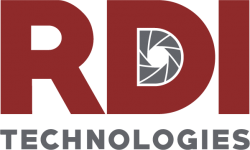 Sean Hollands
Sean HollandsChief commercialization officer
RDI Technologies
USA
Utilizing our patented Motion Amplification technique, we will show how RDI Technologies is revolutionizing dynamic measurements. Data that was acquired in minutes will be shared, showing wind tunnel body dynamics, the ODS response of a car suspension and body panel vibration, a printed circuit board failure analysis, a rotational dynamics example, measuring car interior panel responses to find a noise source, thermal growth, engine mount dynamics, steering wheel shake, idle exhaust vibration dynamics, torsional modulation of brake caliper, brake disk modal response and a torsional shaft measurement.
What the audience will learn
- What is Motion Amplification®?
- How you can apply this technology to find asset faults.
- How to quickly find the root cause of the faults.
- How visual reporting to leadership changes outcomes.
- How to increase the safety of your team.
